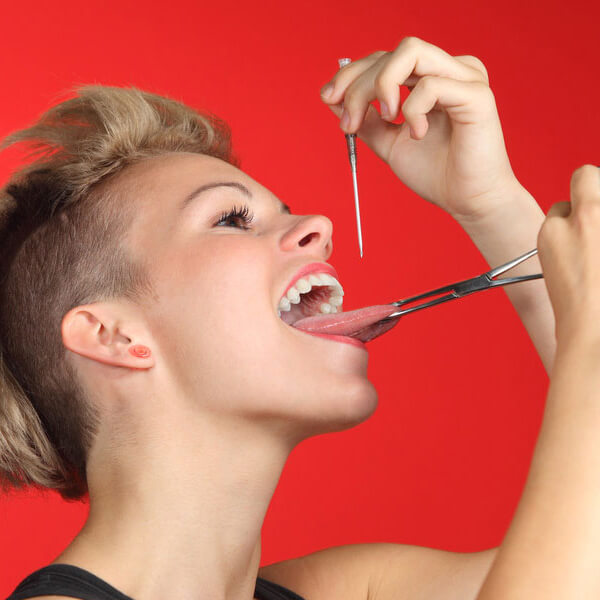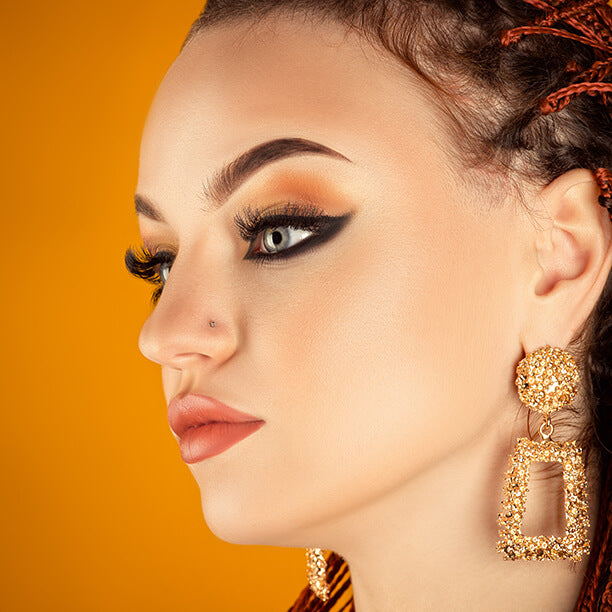For those unfamiliar with getting piercings, you may experience anxiety leading up to your first nose piercing. It’s important to do your research and prepare before turning up to your nose piercing appointment – you’ve got to be sure that it’s right for you.
Read our ultimate guide to nose piercings to make sure you’re fully prepared for your nose piercing and the aftercare that follows.
What to Expect
There’s no way to sugar coat it, nose piercings can and will hurt to some degree. Although it all depends on your pain tolerance, nose piercings generally hurt more than ear piercings. One upside, though, being a very fast piercing, it’ll be over quickly. The piercing time can vary according to the exact type and location of nose piercing that you’re getting, but generally the act is over before you know it.
Before the piercing starts, the piercer will clean and mark the exact spot where the needle will go in. This is your last chance to adjust the exact location of your piercing and make sure you are happy with the placement and how it will look.
Healing Time
Healing times for the piercing hole vary depending on your piercing type, jewellery and location:
⦁ Nostril piercing: 4-6 months
⦁ Septum piercing: 6-8 months
⦁ High nostril piercing: 6-12 months
⦁ Nose bridge piercing: 2-3 months.
Try to avoid touching or moving the piercing, especially in the first few days. Be extra careful not to catch it on clothing, towels, or your pillow as this could lead to a lot of pain, formation of lumps (hypertrophic scarring) and slow the healing process.
Cleaning and Aftercare
The risk of infection can partially be subsided with the choosing of a good studio, but you also have a responsibility post-piercing to maintain good aftercare and cleanliness of the piercing hole.
For aftercare, saline solution will be your new best friend. Consisting of a perfect mixture of sterile water and 0.9% sodium chloride, saline solution is a gentle antiseptic used to clean new piercings to prevent bacteria build-up and infection. Your piercer will usually offer this as part of the aftercare advice & service.
You may experience clear discharge from your piercing within the first several days – don’t worry, this is normal. When this dries up, it can form a crust on the jewellery and around the piercing hole. Try not to touch the area with your bare hands, instead, use saline solution to clean the area. Try not to move the jewellery too much though. Wash the piercing jewellery and the surrounding area twice every day with warm water and gentle, mild soap to rid of any dried-up crust and bacteria build-up.
Knowing the Risks
As with all piercings, there are risks. Badly executed piercings and wound infections. You can mostly avoid the former by booking in with a reputable, highly qualified piercer who can prove they know what they’re doing. Ask to see previous work, look for customer reviews online, and generally be mindful of choosing a studio/piercer. Always do your homework!
Wound infection are usually happen due to poor hygiene and aftercare. To combat the risk of infection, make sure you practice good aftercare using the tips above. If you’re worried about your sensitive skin, consider the materials used in your piercing jewellery and if it’ll cause your skin to react badly. Hypoallergenic piercing jewellery is a safe bet for people with sensitive skin and/or allergies.
Now you’re in the know, you’re ready to book your nose piercing appointment. Good luck!
The Ultimate Guide to Nose Piercings





